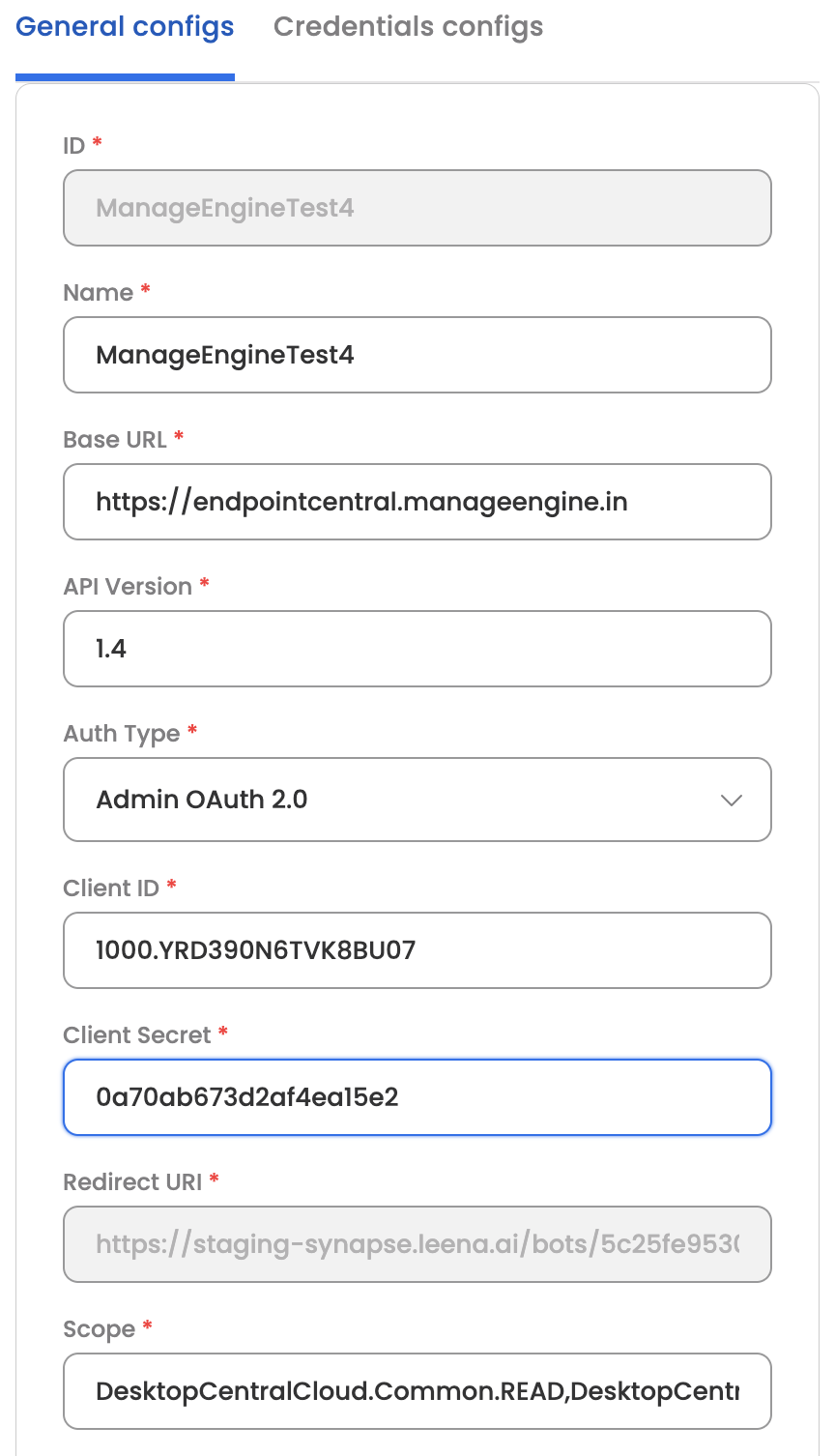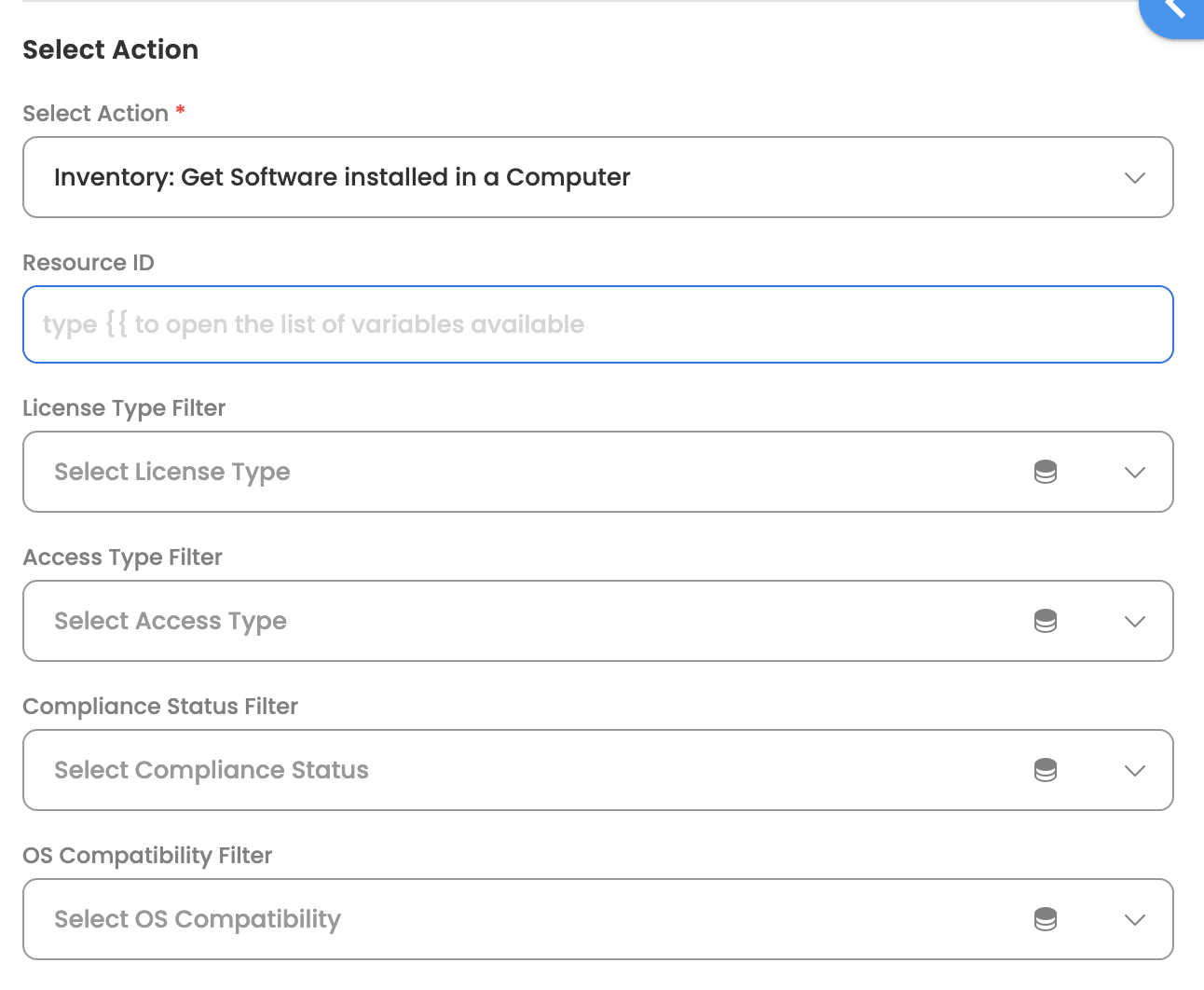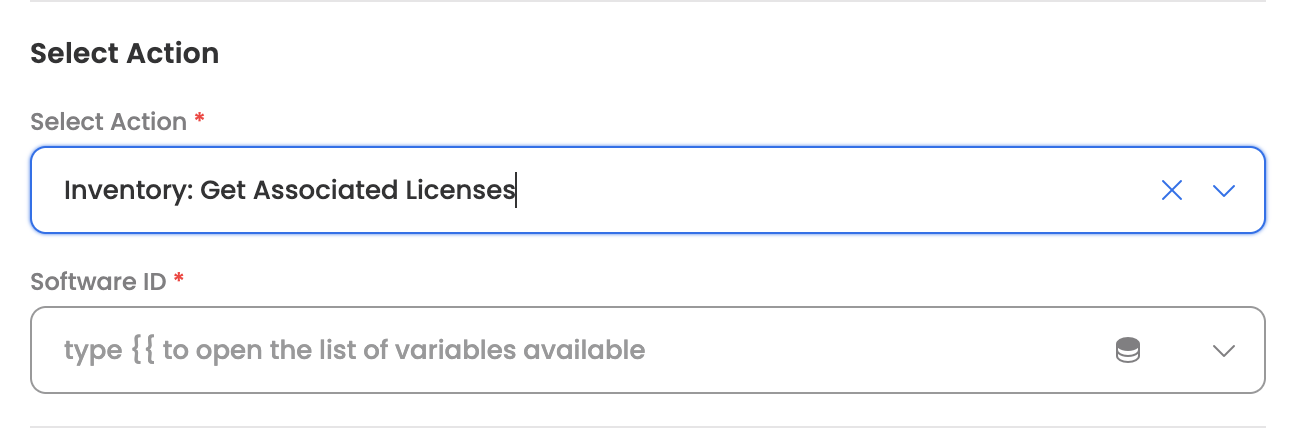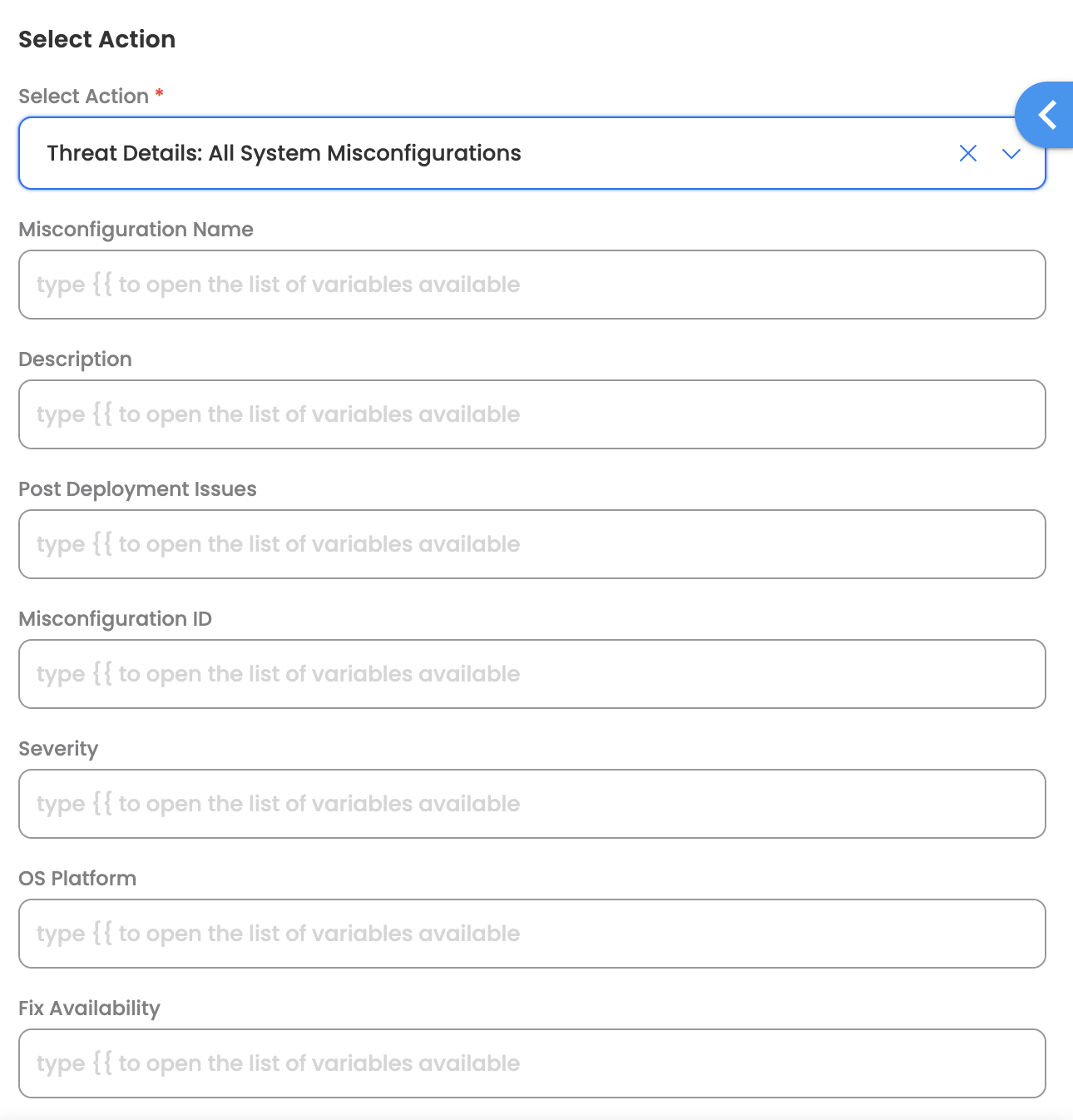ManageEngine End-point Central
Overview
The ManageEngine Endpoint Central connector enables your Leena AI Agents to integrate with your organization's ManageEngine Endpoint Central platform, facilitating automated endpoint management, inventory tracking, patch management, and vulnerability assessment workflows.
ManageEngine Endpoint Central is a unified endpoint management solution that allows organizations to manage and secure their endpoints from a central location. The ManageEngine Endpoint Central connector allows Leena AI to automate inventory management, patch deployment, vulnerability scanning, and interact with endpoint data seamlessly.
API Details
Leena AI integrates with ManageEngine Endpoint Central via REST APIs.
Documentation link: https://www.manageengine.com/products/desktop-central/api/
Setup
The ManageEngine Endpoint Central connector uses OAuth 2.0 authentication with the authorization code grant type.
Prerequisites
Before setting up the ManageEngine Endpoint Central connector, ensure you have:
- Access to Zoho API Console (https://api-console.zoho.in/)
- ManageEngine Endpoint Central administrator privileges
- Ability to create OAuth 2.0 applications in Zoho
- Access to your Leena AI workspace with connector management permissions

Get credentials
Here is how to create an OAuth client in Zoho API Console:
- Log in to Zoho API Console at https://api-console.zoho.in/
- Create OAuth Application:
- Click on Add Client button
- Choose Server based Applications
- Configure Application Details:
- Fill in the required form fields
- Click Create button
- Save and Note Credentials:
- Note the Client ID displayed
- Note the Client Secret displayed
- These credentials are displayed only once during creation
- Generate Sign In URL and Authorization Code:
- Generate the Sign In URL using the format:
https://accounts.zoho.com/oauth/v2/auth?response_type=code&client_id=<clientId>&scope=<scope>&access_type=offline&redirect_uri=<redirect_uri> - Open the URL in a browser and login
- The response will contain:
- code: Authorization code
- location: Region to use for API calls
- accounts-server: Server URL
- Generate the Sign In URL using the format:
Add connection
Here is how to add a connection on Leena AI:
- Log in to your Leena AI workspace
- Navigate to Settings > Integrations
- Click on Add Connector
- Search for "ManageEngine Endpoint Central" and select it from the list
- Start configuring the connector:
- Client ID: OAuth application client ID from Zoho API Console
- Client Secret: OAuth application client secret from Zoho API Console
- Authorization Code: Authorization code obtained from the Sign In URL process
- Location: Region from authorization response (e.g., in for India)
- Redirect URI: The callback URL as configured in your OAuth app
- Base URL: Defaults to https://endpointcentral.manageengine.in
- API Version: Defaults to 1.4
- Scope: Required permissions (Pre-filled with necessary scopes):
- DesktopCentralCloud.Common.READ
- DesktopCentralCloud.Inventory.READ
- DesktopCentralCloud.Inventory.UPDATE
- DesktopCentralCloud.PatchMgmt.READ
- DesktopCentralCloud.PatchMgmt.UPDATE
- DesktopCentralCloud.VulnerabilityMgmt.READ
- Test Connection:
- After entering all required fields, click Test Connection
- If successful, you'll see a green confirmation message
- If the test fails, verify your credentials and OAuth configuration
- Save Configuration:
- Once the connection test passes, click Save
- The connector will be saved and ready to use
Actions
The following actions are supported for the ManageEngine Endpoint Central connector:
Get Software List
Retrieves list of installed software with various filtering options.
Input Parameters
Here are the input parameters required to set up this action:
Mandatory
None
Optional
| Name | Description | Type |
|---|---|---|
| Domain Filter | Filter by domain | String |
| License type Filter | Filter by license type (Commercial, Non-Commercial, Unidentified) | String |
| Access type Filter | Filter by access type (Allowed, Prohibited, Not Assigned) | String |
| Compliance status Filter | Filter by compliance status | String |
| Page | Page number for pagination | Integer |
| Page limit | Number of items per page | Integer |
| Search type | Type of search | String |
| Search column | Column to search in | String |
| Search value | Value to search for | String |
Required scope at connector level: DesktopCentralCloud.Inventory.READ
Here is a sample JSON input:
{
"Domain Filter": "company.local",
"License type Filter": "Commercial",
"Access type Filter": "Allowed",
"Page": 1,
"Page limit": 50,
"Search type": "contains",
"Search column": "software_name",
"Search value": "Microsoft"
}Response
Get Hardware List
Retrieves list of hardware components.
Input Parameters
Here are the input parameters required to set up this action:
Mandatory
None
Optional
| Name | Description | Type |
|---|---|---|
| Domain Filter | Filter by domain | String |
| Page | Page number for pagination | Integer |
| Page limit | Number of items per page | Integer |
| Search type | Type of search | String |
| Search column | Column to search in | String |
| Search value | Value to search for | String |
Required Connector Scope: DesktopCentralCloud.Inventory.READ
Here is a sample JSON input:
{
"Domain Filter": "company.local",
"Page": 1,
"Page limit": 50,
"Search type": "contains",
"Search column": "hardware_type",
"Search value": "Processor"
}Response
Get hardware installed computer list
Retrieves list of computers with particular hardware installed.
Input Parameters
Here are the input parameters required to set up this action:
Mandatory
| Name | Description | Type |
|---|---|---|
| Hardware ID | The ID of the hardware for which the computers are to be listed | String |
Optional
| Name | Description | Type |
|---|---|---|
| Domain filter | Filter by domain | String |
| Branch Office filter | Filter by 'Branch Office' | String |
| Custom Group filter | Filter by a custom group which is created under End-point central | String |
Scope: DesktopCentralCloud.Inventory.READ
Here is a sample JSON input:
{
"Hardware ID": "hw_12345",
"Domain filter": "company.local",
"Branch Office filter": "HQ",
"Custom Group filter": "Engineering Dept"
}Response
Get detailed summary for a computer
Retrieves detailed summary of a specific computer.

Input Parameters
Here are the input parameters required to set up this action:
Mandatory
| Name | Description | Type |
|---|---|---|
| Resource ID | Computer ID. This would depend on how the unique IDs of computers are mapped in a client's instance. | String |
Optional
None
Scope: DesktopCentralCloud.Inventory.READ
Here is a sample JSON input:
{
"Resource ID": "comp_67890"
}Response
Get Software/s installed on a Computer
Retrieves software/s installed on a specific computer in the eco-system.

Input Parameters
Here are the input parameters required to set up this action:
Mandatory
| Name | Description | Type |
|---|---|---|
| Resource ID | Computer ID. This would depend on how the unique IDs of computers are mapped in a client's instance. | String |
Optional
| Name | Description | Type |
|---|---|---|
| License type Filter | The type of software license (Commercial, Non-commercial, Unidentified) | Dropdown |
| Access type Filter | The filter on Access type (Allowed, Prohibited, Not assigned) | Dropdown |
| Compliance status Filter | The filter on the compliance status of the software (Under licensed, Over licensed, In Compliance, Expired, Not Available) | Dropdown |
| OS compatibility | The filter on the OS compatibility for the software (32-bit, 64-bit) | Dropdown |
Scope: DesktopCentralCloud.Inventory.READ
Here is a sample JSON input:
{
"Resource ID": "comp_67890",
"License type Filter": "Commercial",
"Access type Filter": "Allowed",
"Compliance status Filter": "In Compliance",
"OS compatibility": "64-bit"
}Response
Get Associated Licenses with the software
Retrieves licenses associated with specific software. This action can be used to fetch the available license and types for the software.

Input Parameters
Here are the input parameters required to set up this action:
Mandatory
| Name | Description | Type |
|---|---|---|
| Software Id | The Software ID. This would depend on how the unique IDs of the software are maintained. | String |
Optional
| Name | Description | Type |
|---|---|---|
| page | Page number for pagination | Integer |
| Page limit | Number of items per page | Integer |
Scope: DesktopCentralCloud.Inventory.READ
Here is a sample JSON input:
{
"Software Id": "sw_12345",
"page": 1,
"Page limit": 20
}Response
Perform patch scan on specific systems
Initiates a patch scan for specific systems. Basis the output of this action further actions to update the patches can be triggered.

Input Parameters
Here are the input parameters required to set up this action:
Mandatory
| Name | Description | Type |
|---|---|---|
| resource IDs | Comma-separated system/resource IDs | Array of Integers |
Optional
None
Scope: DesktopCentralCloud.PatchMgmt.UPDATE
Here is a sample JSON input:
{
"resource IDs": [12345, 67890, 11223]
}Response
Approve/Decline a patch for deployment
This action approves or declines a patch for deployment. This action can be used to take system admin's inputs on a patch deployment and basis input approve/decline the same.


Input Parameters
Here are the input parameters required to set up this action:
Mandatory
| Name | Description | Type |
|---|---|---|
| Patch ID | The unique ID via which a patch is identified. | String |
Optional
None
Scope: DesktopCentralCloud.PatchMgmt.UPDATE
Here is a sample JSON input:
{
"Patch ID": "patch_98765"
}Response
Get system misconfigurations
Retrieves all system misconfigurations across all the systems.

Input Parameters
Here are the input parameters required to set up this action:
Mandatory
None
Optional
| Name | Description | Type |
|---|---|---|
| Domain Filter | Filter by domain | String |
| Page | Page number for pagination | Integer |
| Page limit | Number of items per page | Integer |
| Severity filter | Filter by severity level | String |
| Other supported filters | Misconfiguration ID, OS Platform, Fix availability etc | - |
Scope: DesktopCentralCloud.VulnerabilityMgmt.READ
Here is a sample JSON input:
{
"Domain Filter": "company.local",
"Page": 1,
"Page limit": 50,
"Severity filter": "High"
}Response
Updated about 19 hours ago
